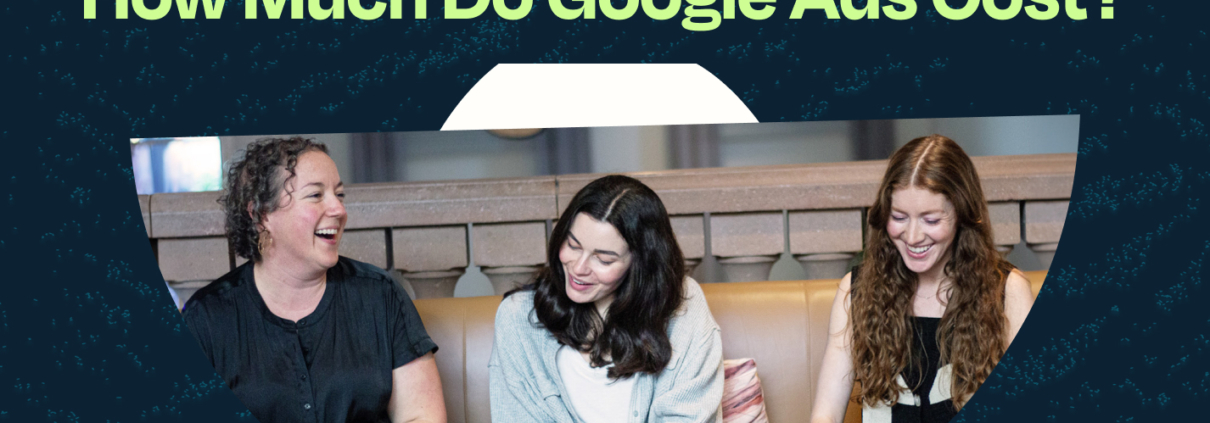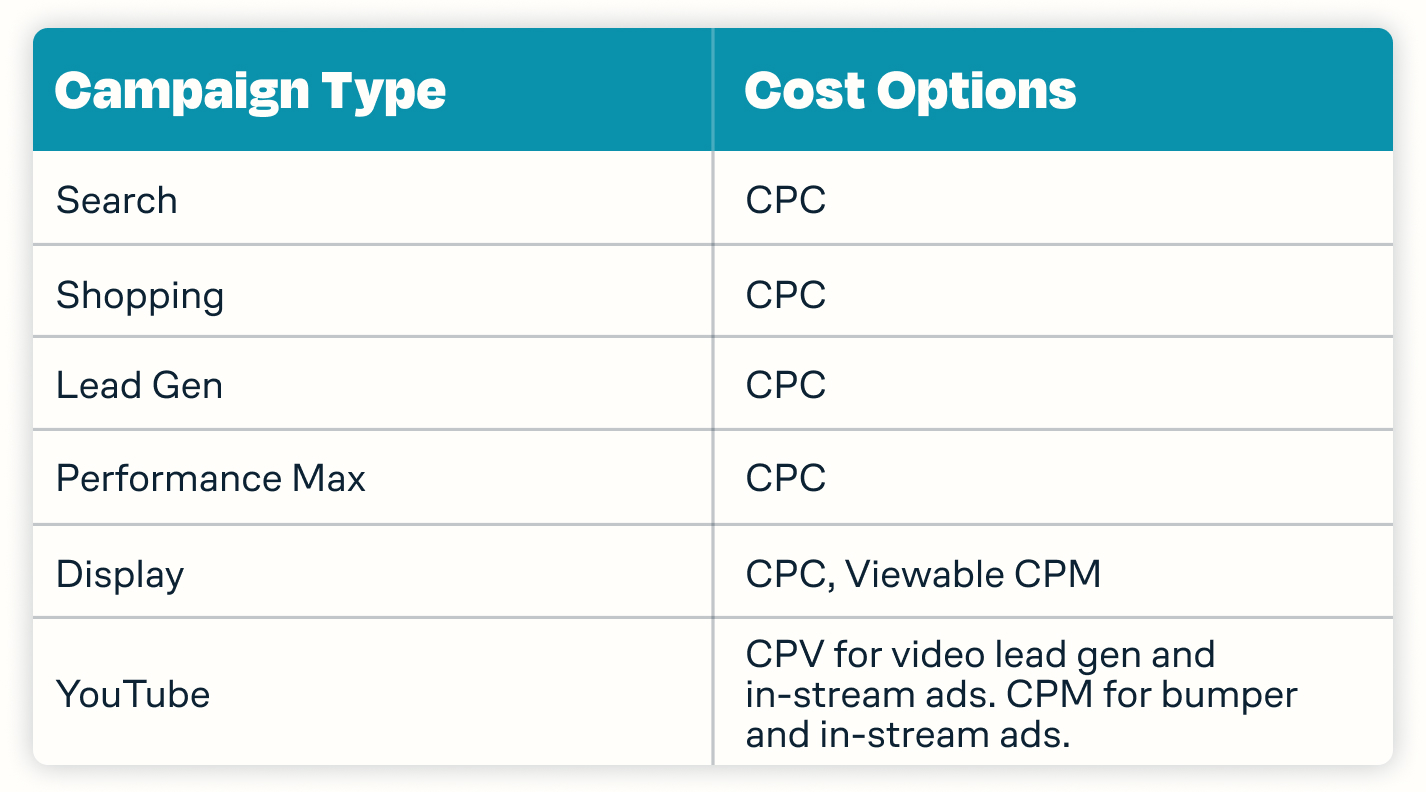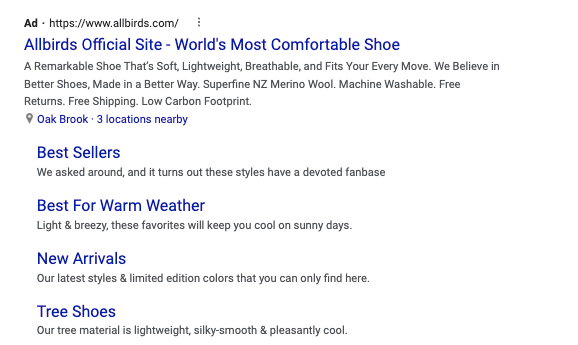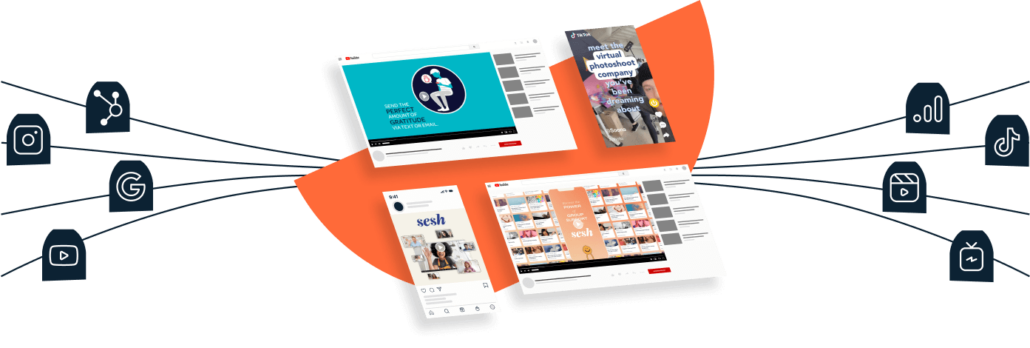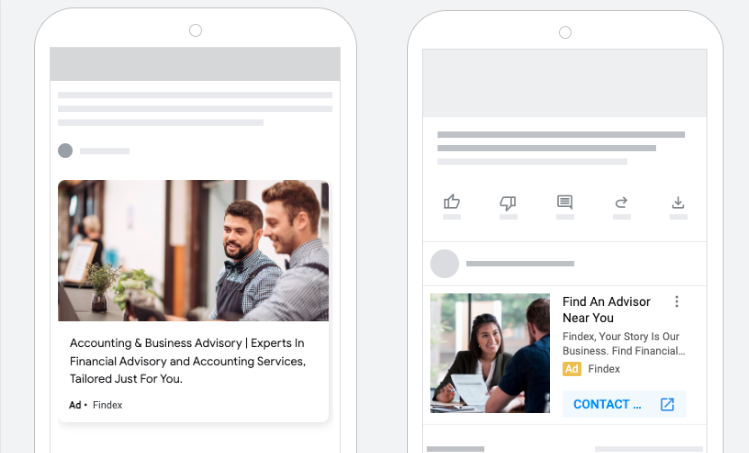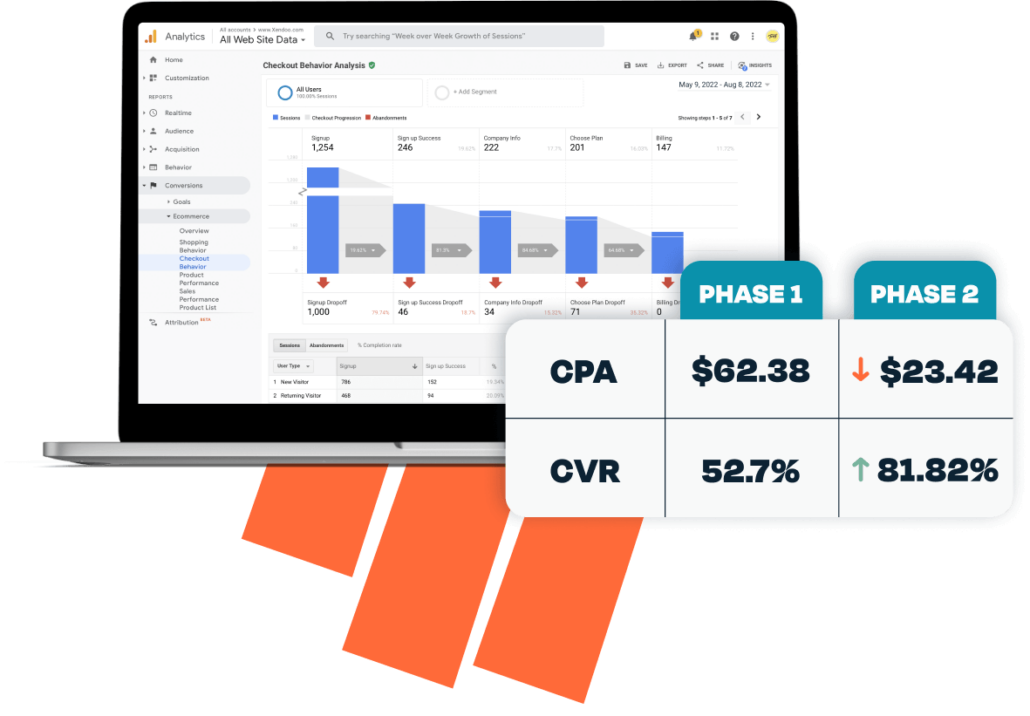How Much Do Google Ads Cost?
Author’s note: This post was originally published in 2020, it has since been updated in 2024!
Whether you work in eCommerce or simply market your business online, you’ve likely heard of cost-per-click (CPC) advertising in which the advertiser is charged each time their ad has been clicked and the user is redirected to the advertiser’s website. CPC is the primary way that advertisers are charged when running Google Ads along with other first tier search engines, but what advertisers don’t always know, however, is how much Google Ads cost.
With CPC advertising, advertisers will typically place bids on keyword phrases relevant to their target audience. When a potential customer searches for this keyword phrase, search results will display the advertisement. Among the first-tier search engines that offer CPC advertising, Google reigns supreme. This makes sense, as the search giant controls nearly 90% of its market share and has around four billion users.
This degree of market reach is both astounding and unequaled across other online advertising venues like Facebook or Microsoft Advertising (formerly Bing Advertising). Google Ads’ dominance is such that, for many small-to-midsize businesses (SMBs), it represents the only online forum in which they advertise. In fact, of the 65 percent of SMBs that invest in CPC advertising, the vast majority utilize Google Ads. Since it can make up a majority of your online advertising, how much Google Ads cost becomes an important consideration.
Unfortunately, there is no simple answer to this question. You may read online that Google Ads average between $1 and $2 per click. For SMBs, this can come out to $9,000 to $10,000 a month. That’s not chump change for anyone, much less a small business.
If you wonder why so many businesses fork over that kind of cash, consider this: Google Ads offers an average return of $8 to every $1 spent on advertising. That’s a lot of “averages,” however, and it doesn’t tell the whole story. To learn the truth of Google Ads’ cost, and how this investment works, requires a little more digging.
Average Google Ads Cost By Campaign Type
As stated above, how much Google Ads cost depends on your targeted keywords. If you want to target a keyword like “insurance,” for example, get ready to lay out some cash. As the most expensive keyword, “business services” can cost as much as $58.64 per click. Keyword bidding aside, the type of campaign you choose determines the way in which your charges accrue.
Your average Google ads cost will accrue differently based on which of the six types of campaigns you pursue. These campaigns include:
- Search ads
- Display ads
- Lead Gen ads
- Shopping ads
- YouTube ads
- Performance Max ads
The type of cost associated with each appears in the table below.
Google Search Ads
The most basic ad type on the Google Ads platform, search ads, display within Google search results. If you perform a search, you will typically see at the top of the page sponsored links marked as ads. Search ads are billed based on CPC and have the benefit of displaying in the same spot searchers look for information. The shared format of these ads and standard search results helps ensure users see them. The familiar look also encourages more clicks.
Google Search Bidding Strategies
When you are serving ads on Google Search Network, there are a handful of different ways that you can choose to bid. This bidding strategy will determine how much a traffic costs, who Google serves the ad to, and ultimately, how much you will pay compared to the competition. With these different strategies, you can focus your Google Ad spend on Conversions, Conversion Value, Clicks, or Impression Share.
Which Bidding Strategy is right for you?
Let’s take a look at the different paths you can take when setting up a Search campaign. each one of these below is going to indicate to Google what your main priority is. Once Google knows that priority, it can focus on getting the right users to click your ads. (Reminder, these strategies are set at a campaign level, not an ad group level.)
Maximize Clicks is an oldie but a goodie! If your main goal is to send traffic to your site, this is the bidding strategy for you. Google will aim to maximize low cost traffic when serving your ads. CPC tends to be cheaper with this strategy since it is fully traffic based.
Maximize Conversions is where Tuff optimizes many of our campaigns to. This is an effective bidding strategy when you want a user to click on your ad AND take an action on your site. The most common conversions to optimize to are a product purchase or a lead form submission. In this scenario, you may pay more per click because Google is focusing further down the funnel. When focused on conversion, competition is higher.
Target CPA is most often used when efficiency is the main metric you care about. An example of this would be an E-Commerce company wanting to maximize their sales with an acquisition goal of $50. With this bidding strategy, you can focus Google on bringing in users who are likely to convert WHILE keeping costs low.
Target Impression Share shifts the campaign focus to maximizing the amount of eyeballs your ad shows up for. This is particularly useful for Branded Keyword bidding. If you want to make sure that you show up for 90% of all searches for your brand, this is the bidding strategy for you.
Google Display Ads
Google has a network across various industries that appeal to a wide range of audiences. These websites have opted into Google Ads to display advertising across the Google Display Network. Website owners receive payment per click or impression.
For advertisers, Google display ads put content directly in front of audiences while they visit a website of interest. Display ads typically take the form of images that draw the eye away from a site’s written content. Display ads determine price through CPC or viewable cost per mille (CPM). CPM measures cost through viewable impressions. Viewable impressions occur simply as the ad appears, and do not require a click. For CPM advertising, Google Ads cost a set amount per 1,000 impressions.
Demand Gen Ads (Previously known as Discovery)
CPC determines the cost of one of Google’s newest types of advertising, Demand Gen ads. These are native ads that appear across multiple Google-owned properties, including the YouTube homepage, Google Discover feed, and Gmail feeds. Visually compelling and designed for mobile devices, these ads rely on the “power of intent.” This means that Google uses information derived from a customer’s site visits, video viewing, map searches, and more to determine the content of the advertising. Learn more about why we love Google Demand Gen Ads at Tuff.
Highly targeted marketing like this has an obvious benefit in that it should automatically appeal to customers’ tastes. Google thinks of this campaign type as an extension of a social media marketing strategy. Since this acts as native advertising similar to the standard social channels, Demand Gen campaigns can really bridge that gap between traditional PPC on Google Ads and Social Advertising.
Shopping Ads
These types of ads allow you to promote individual products or lines, rather than a brand as a whole. Like other types of Google Ads, these appear on search engine results when a customer searches for a product or service.
For example, if you were to search for “running shoes,” you might see a detailed ad on the right side of your screen for Nikes. Shopping ads can include prices, photos, and customer ratings. As with other types of search ads, these Google Ads run a set CPC.
YouTube Ads
YouTube video ads open up a vast marketplace for advertisers engaged with Google Ads. In fact, YouTube represents the third-most visited website in the world, behind only Facebook and Google. There exist many types of YouTube ads, most of which appear either before or during viewable content.
The cost of YouTube ads depends on which type of ad you run. Video ads are cost-per-view (CPV), while bumper ads are CPM. Instream ads that run while the viewer engages with a video can be either CPV or CPM.
However you can also choose to use a Maximize Conversions bidding strategy when utilizing conversion optimized YouTube campaigns known as Video Action campaigns or can target a certain Frequency if you want to make sure the user sees your ad a certain amount of times. In the case of Conversion campaigns, advertisers are charged by CPC.
Performance Max
Performance Max is the newest campaign type revealed by Google Ads in early 2022, and it relies heavily on algorithmic bidding. It also requires advertisers to input a wide variety of assets including video, display graphics, shopping feeds, and even search copy. With all of the assets given to the campaign in an ‘asset group,’ Google uses its algorithm to determine when and where to show ads created with combinations of the assets provided.
Performance Max campaigns are currently charged by CPC, but advertisers are not allowed to set their own CPC. Instead, advertisers can choose between Max Conversions and Max Conversions Value bidding strategies with or without a target CPA. Learn more about how Tuff clients are leveraging Google’s Performance Max campaigns.
Here’s how Performance Max can use similar assets in different formats – both on the Discover and Youtube placements.
Google Ads Cost By Industry
You might assume that since you know the average CPC of Google Ads, along with the method for measuring cost, you’re ready to build a budget. In reality, this is not the case. As illustrated in the example of “business services” mentioned above, Google Ads cost vastly more or less across different industries. There are thousands of highly competitive keywords which cost upwards of $50 a click, but on the other hand, there are countless relevant keywords that cost less than $1.00 per click.
Below, you can see a table that compares the CPC of Google Ads from search campaigns across various industries. The data for this table was taken from actual Tuff-managed search campaigns from January 2021 – January 2024.
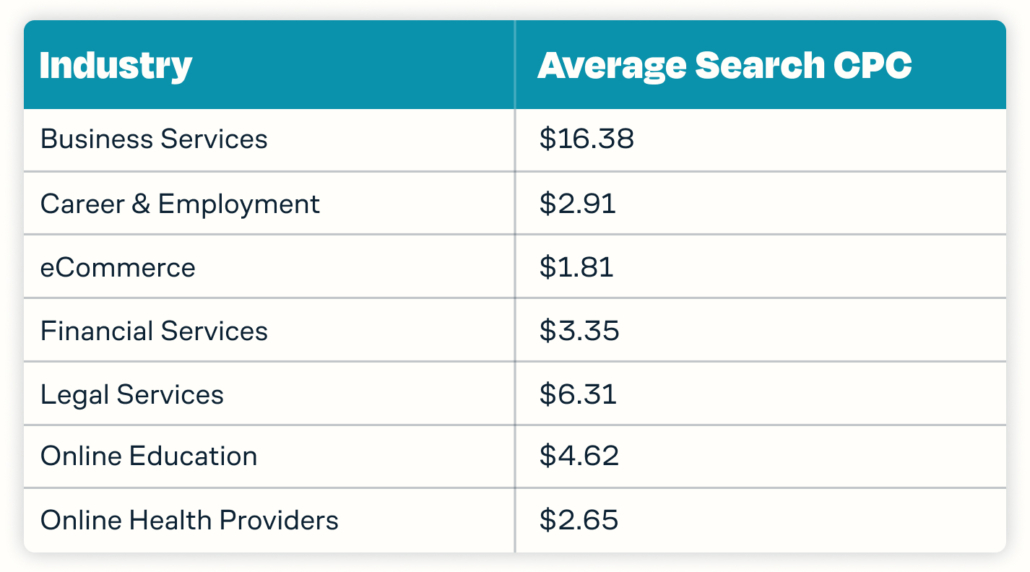
You can also expect that Google Ads costs will differ widely within the same industry. For example, in the fashion industry, “activewear” and other exercise-related terms appear near the top in terms of cost. In this case, you can tie the difference to societal factors. In the wake of Covid-19, personal fitness saw a boom, as it gave consumers an excuse to leave their homes for a walk or run.
This provides an important lesson: when the time comes to estimate the cost of your Google Ad campaign, you’ll need to consider a wide array of factors.
How to Estimate the Cost of Your Google Ads Campaign
To better understand how much a campaign or specific keyword will cost, you can employ Google Ads’ Keyword Planner. It’s important to understand that Google Ads’ cost is determined through ad auctions. As the advertiser, you set the maximum CPC you will pay. This bid then gets compared to the bids of other advertisers who targeted the same keyword. The higher your bid, the better your ads’ placement in the campaign type of your choosing.
Before you start bidding on keywords, you will want to use the Keyword Planner tool to help outline your Google Ads cost. This tool allows you to search for specific keywords and see their historical cost, along with cost forecasts.
Google’s Keyword Planner essentially reveals the industry benchmarks for your targeted keywords. Remember, if you want better placement in search results, you will need to bid higher than the benchmark provided in the average CPC. Keyword Planner also estimates the number of clicks and impressions your ad will receive on a daily basis. Between this and your CPC bid, you can easily derive an estimate for the cost of your campaign.
How to set a Google Ads budget
Once you define your targeted keywords and get an idea of their cost, you can create a daily or monthly budget for your Google Ads campaign. These budgets represent the maximum amount of money you will pay for a campaign across the chosen time period. This ability to control your ad spend makes advertising on Google a safe bet for your budget. Once you set your maximum bid and budget for Google Ads, you’ll suffer no surprises from unexpectedly high bills.
We recommend looking at a Google Ads budget within a larger Paid Media plan. This allows you to see exactly how a Google ads budget fits into the wider digital marketing budget for your business.
Quality Matters
Quality represents one final factor of Google Ads’ cost. In fact, the quality score ranks alongside your maximum bid as one of the most important factors that influence your AdRank, or the placement of your ads.
Google determines your quality score based on the relevance and quality of your advertising. More clicks on an ad will give you a higher overall Quality Score. Curious about how to raise this all-important score?
There’s really no secret to it. If you create compelling ads with relevant keywords that deliver what the searcher expects, you’ll do just fine. To attract new business to your website, focus on the highest intent keywords for your brand. this will lead to a higher click through rate, better conversion rate, and ultimately more money in your pocket in the long run. We recommend matching your ad copy directly to the keywords being targeted. If you sell Blue Sweatshirts, then make sure that the term “Blue Sweatshirts” shows up in your ad somewhere. Keywords relevant to your business will ALWAYS perform better than ones that are not.
The quality of your landing page will also affect your Quality Score, so make sure your website offers a compelling experience for its visitors. It makes sense. We are all consumers. When a landing page experience is a positive one, we are more likely to spend additional time there. If that landing page matches exactly what I searched for, Blue Sweatshirts for example, it will lead to better performance.
The Cost of Google Ads: It’s All Up to You
As you can see, many factors can influence Google Ads’ cost. Some of these come from clear-cut choices, such as the type of campaign you run and your maximum bid at an ad auction. Other things, such as industry competition, are outside of your control.
Though you can’t control the cost of popular keywords, you can absolutely plan a campaign around creative phrases that precisely target your market. All it takes is a little research, some time on Keyword Planner, and a daily or monthly budget that reflects your means and goals. Put work into these, and you’ll start seeing those 8-to-1 returns before you know it.

Chris is a PPC Strategist based in Nashville, Tennessee. When he’s not scaling Google Ads & YouTube campaigns, he enjoys longboarding, tinkering with automation tools, and a little bit of gaming.
